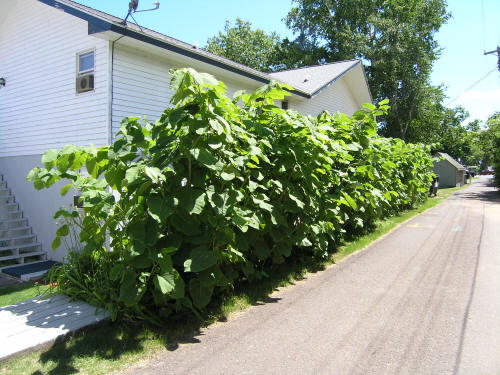
Giant Knotweed
Fallopia sachalinensis (F. Schmidt) Ronse Decraene
(formerly Polygonum sachalinensis F. Schmidt)
Polygonaceae (Smartweed Family)

▲▼ large plants in a hedgerow in northern Wisconsin
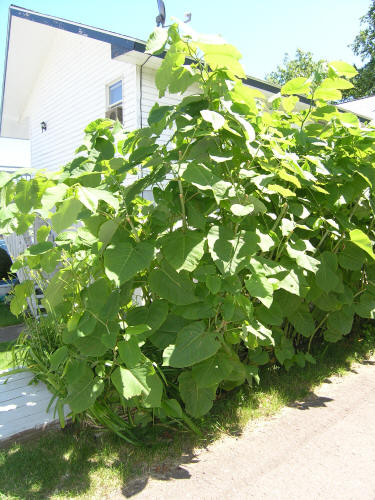
▲▼ large plants in a hedgerow in northern Wisconsin
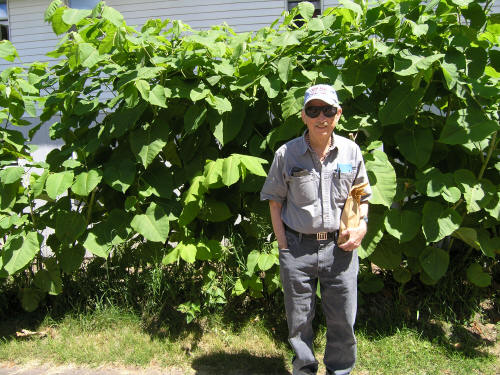
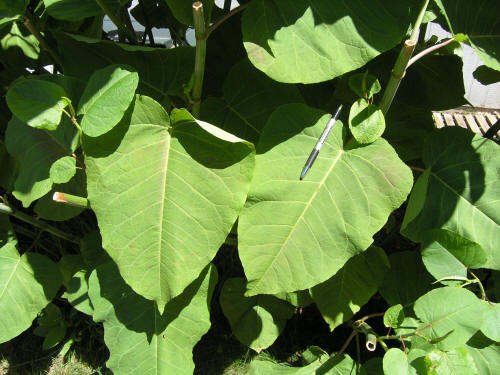
▲▼very large leaves (see ball point pen over leaf in upper photo for perspective)
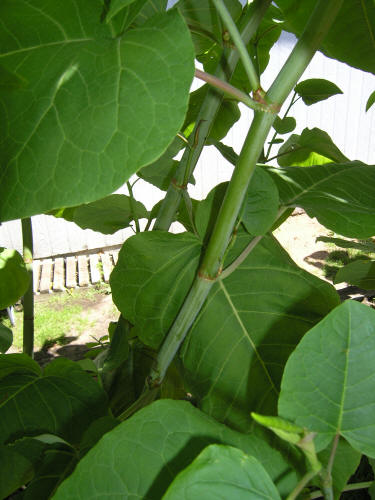
▲▼ stems, showing that stems are hollow (below)

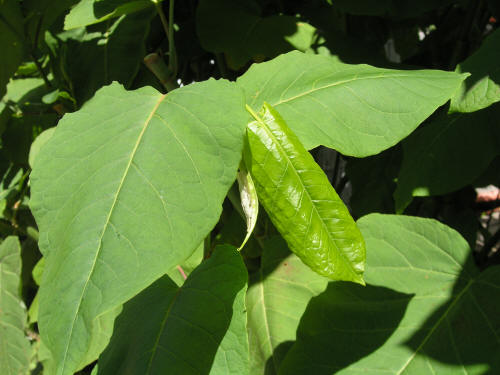
▲ new leaf emergence
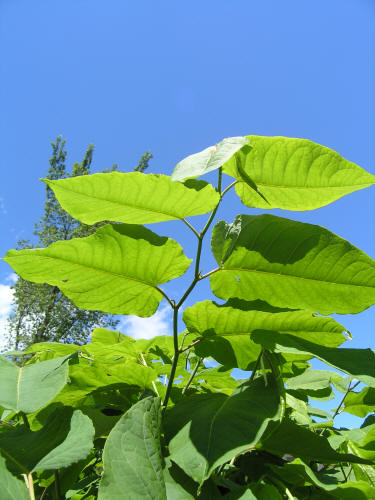
▲ new stem growth has zig-zag pattern
Giant Knotweed:
·
A creeping perennial knotweed (in the Smartweed Family—Polygonaceae) that
reproduces by rhizomes & seeds
·
Has large, heart-shaped leaves that can be up to 16 inches long and 10 inches
wide (or larger) and can grow up to 15 feet tall
·
Stems large diameter (bamboo-like), hollow and die back to ground each winter
·
Flowers are tiny, whitish-pink in axillary panicles, showy
·
Introduced as an ornamental plant, but has escaped cultivation—a newer weed
·
Prefers moist, well-drained, fertile soils—often found on ditchbanks, pastures
·
Prefers full sun but can tolerate moderate shade—so far mainly found in northern
Midwestern states
·
Appears similar to
Japanese Knotweed (Fallopia cuspidata), with which it can
hybridize, but has much larger leaves and mature size